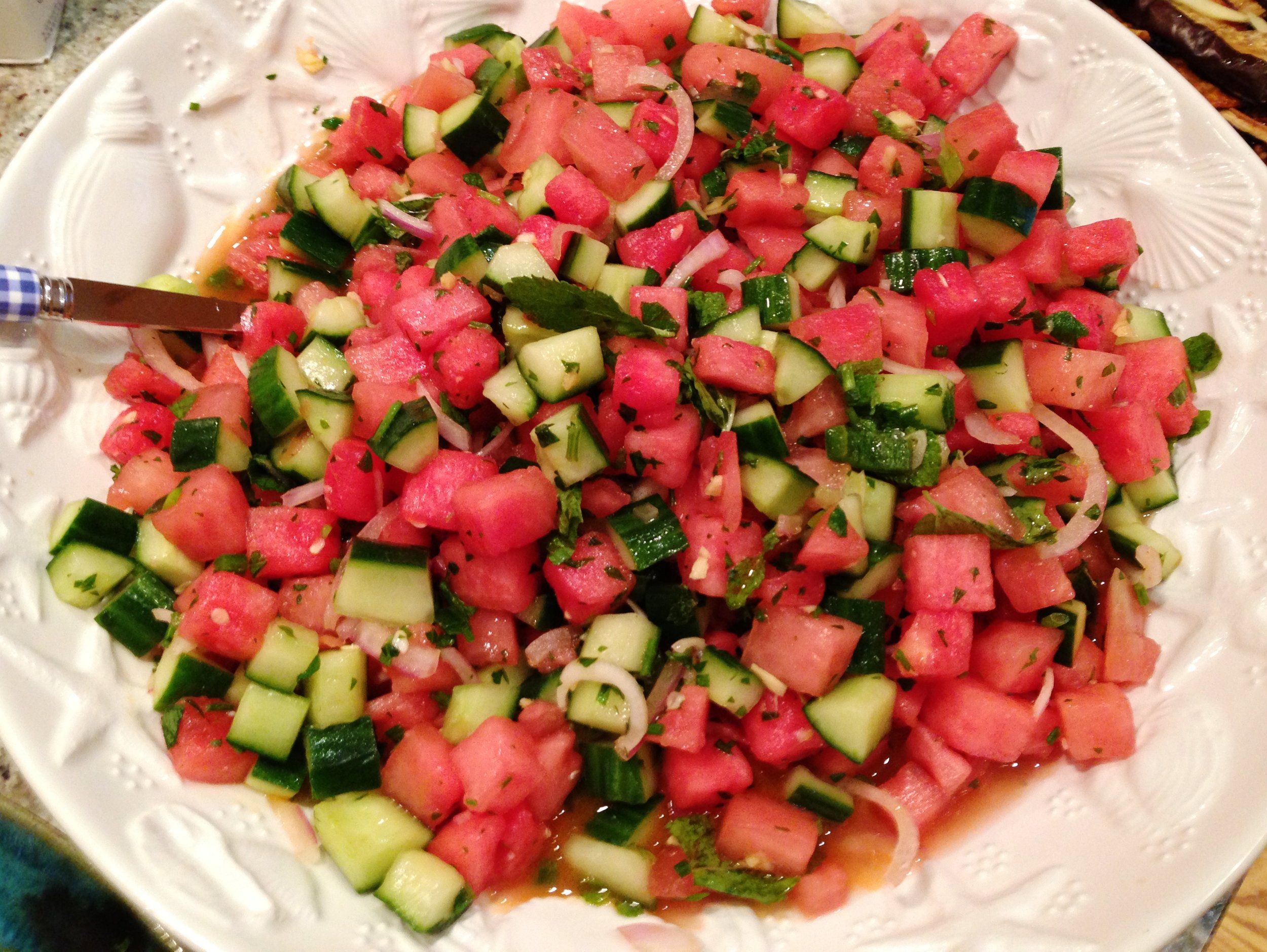It's that time of year again: Halloween is upon us. This season reminds me of growing up in central New Jersey, visiting apple orchards and pumpkin farms to pick out what would become our jack-o-lanterns with my brothers and my parents. And a treat in which we'd indulge -- aside from our actual trick-or-treating (were were only allowed 3 pieces of candy per day from our loot, so we had to choose wisely!) -- was roasted pumpkin seeds.
We'd carve our pumpkins with the help of our parents, and sometimes, our family friends as well. We'd gather neighborhood kids and clean out the pumpkins in our back yard, lots of newspaper spread out beneath us. One year, we were lucky enough to have our friend Larry Calcagno, a wonderful and talented painter, come out to New Jersey from Manhattan, to help us carve some very artistic jack-o-lanterns. As you can see in the photo at left, I am supervising him, just to make sure he's, you know, doing it correctly. (I love this photo because it's so sweet, and so...seventies).
Bottom line, it was a great community and family activity of which I have the happiest of memories. We prepared the seeds quite simply. We'd roast them in the oven, sprinkled with a little salt when they were done, dry and toasty and slightly browned at the edges. We knew we were doing a good thing by not letting the seeds go to waste. What I didn't know as a kid was how good pumpkin seeds actually are for us. The seeds themselves are nutrient-rich, with lots of protein, dietary fiber, niacin, iron, zinc, manganese, magnesium, and phosphorus. Fun fact? The earliest known evidence of the domestication of pumpkins and squash varietals dates back to between 8,000 and 10,000 years ago -- predating other "New World" crops like maize (corn) and beans. Pumpkin seeds are truly the perfect, healthy, (South, Central, and North) American snack!
So, what to do with the seeds once they're freed from the slimy gunk of the pumpkin's flesh? It's best to rinse them off, rubbing them together in your hands under running water. Some recipes suggest boiling the seeds for 8 or 10 minutes before baking them, but that's a step you can skip if you're short on time. You can dry them off in dish towels or with paper towels, or simply by spreading the seeds out on a cookie sheet or baking pan on a layer of parchment paper, and baking in the oven. Once the surface water has evaporated, you can mist them or sprinkle them with some vegetable or olive oil, or with a little pumpkin oil to amp up the pumpkin flavor. Once they're toasted and have turned a golden color, you can toss them with sea salt.
If you'd like to add even more flavor -- and healthful benefits -- you can add some smoked paprika, cumin, turmeric, and a drizzle of Worcestershire sauce, or make them a bit sweet with a dusting of cinnamon, ground ginger, and a drizzle of maple syrup. Either way, these spices add to the anti-inflammatory and sugar-regulating properties of the seeds themselves. And, once they've cooled, you can simply store them in ziploc bags and they stay fresh for several days.
You can also incorporate pumpkin seeds into your cooking, both savory and sweet. I love to sprinkle pepitas, as they're known in Latin cultures, over my autumn salads and vegetable dishes. They're an important ingredient in Mexican moles, giving body to the sauce along with their flavor. I add them to salsas and green sauces: pulsed in a food processor for a few seconds with some olive oil, tomatillos, jalapeno and roasted garlic, and you have a great sauce for everything from tacos to roasted pork loin.
A whir in the blender with some parsley, cilantro, red onion, garlic, and scallions, and add some vinegar and olive or pumpkin seed oil, and you have a great sauce for grilled fish and meat dishes. And, in one of my favorite fall iterations of a pumpkin seed-enhanced dish, I make a pumpkin seed brittle. It's great on its own, but it is also a tasty and gorgeous topper and "accessorizer" to my famous pumpkin cheesecake. It makes for a fabulous ending to an autumn meal or Thanksgiving feast.
Enjoy this seasonal ingredient, and HAPPY HALLOWEEN, everybody!









































































































































































